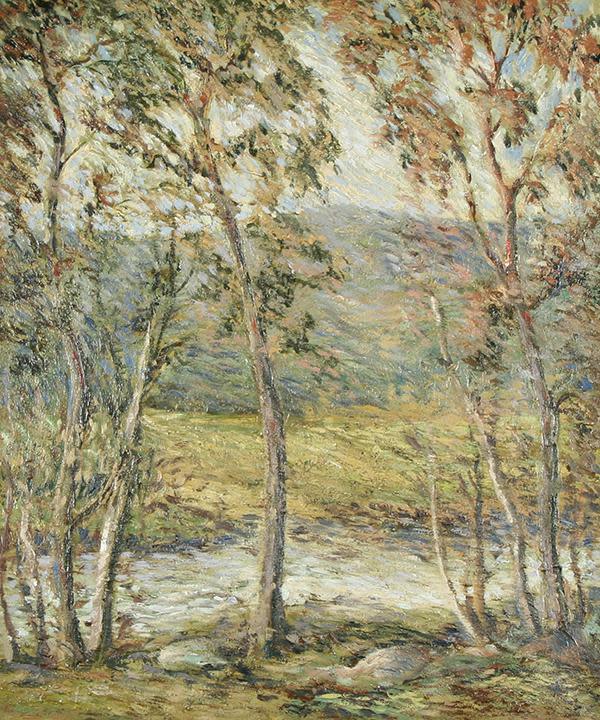-
Artist: Paul King (American, 1867-1947)
“Traditional American painter Paul King was born in Buffalo, New York on February 9, 1867. Even as a boy, Paul learned the meaning of composition, color, and texture as he assisted his father, Bernard H. King, a competent designer and craftsman of objects in precious metal.
He also learned the importance of draftsmanship at the age of sixteen when he took up lithography*. After the founding of the Buffalo Art Students League (1891), King became one of the first to study there. In Buffalo's Bohemian Sketch Club he shared his enthusiasm for art with Eugene Speicher, Edward Dufner, and George Bridgman who also taught at the Buffalo Art Students League. The League would move into the basement of the Albright Art Gallery in 1902. Beginning in 1899, Bridgman became an influential teacher at the Art Students League in New York, where, between 1901 and 1904, King studied life drawing under H. Siddons Mowbray, a highly respected academic painter. King had already felt the influence of the international style of impressionism in the 1890s. Some of this derived from the Art Students League and from the 1901 Pan-American Exposition in Buffalo*” (1).
“King then traveled Europe studying masters both ancient and contemporary. Many life changing experiences where had that helped shape his world view including an epiphany on the Palatine Hill in Rome where he was struck by the pathos of humanity in its need for hegemony, power and sex. King went on to earn his Masters from Boston University where he studied with James Weeks, one of the originals of the Bay Area Figurative School” (2).
“An American artist of diverse accomplishments, Paul King gained professional acclaim early in the 20th century for his seascapes, portraits, landscapes and rural scenes. His versatility combined with technical mastery has become a recognized hallmark of his art. He presented common scenes with such artistic quality that he became quite popular with critics and the buying public” (3).
“From 1908 to 1921, King was a board member of the Philadelphia School of Design for Women, serving as vice president and acting president from 1915 to 1918. During World War I, he worked in the camouflage unit. King’s pictures, often of everyday outdoor life or common rural scenery, are invested with freshness and insight. His landscapes, especially his winter scenes, became particular favorites. In 1923, Early Winter won the National Academy of Design Altman prize. King was named an academician in 1933” (4).
“The artist opened a summer studio at Stony Brook on Long Island and painted there for many years. In 1928, he was awarded the Isidor Prize from the Salmagundi Club and five years later he was named full academician at the NAD. Although his once highly regarded impressionism came to be eclipsed by more modern imagery, the artist continued to paint throughout the 1930s and early 1940s — as late as 1937 King received a bronze medal from the staid National Arts Club. He died in New York City, on November 25, 1947 at the age of eighty-six, when living artists as diverse as Picasso, Charles Burchfield, Chaim Gross, and Joe Jones all had one-man shows in various New York galleries” (1).
Reference:
1.
Love R, Worley P. Paul Bernard King [internet]. [cited 2015 June 3]. Available from: http://www.askart.com/artist_bio/Paul_Bernard_King/23656/Paul_Bernard_King.aspx
2.
Paul King Fine Art Staff. Paul King [internet]. [cited 2015 June 3]. Available from: http://www.paulkingfineart.com/bio
3.
Vallejo Gallery Staff. Paul King (1867-1947) [internet]. [cited 2015 June 3]. Available from: http://vallejogallery.com/artist.php?id=183
4.
Zellman, MD. 300 Years of American Art. New Jersey: The Wellfleet Press; 1987.
